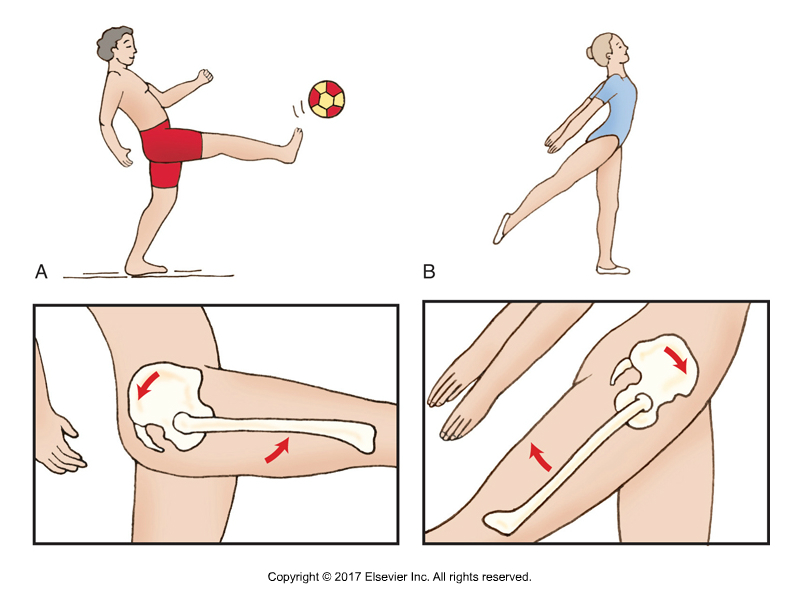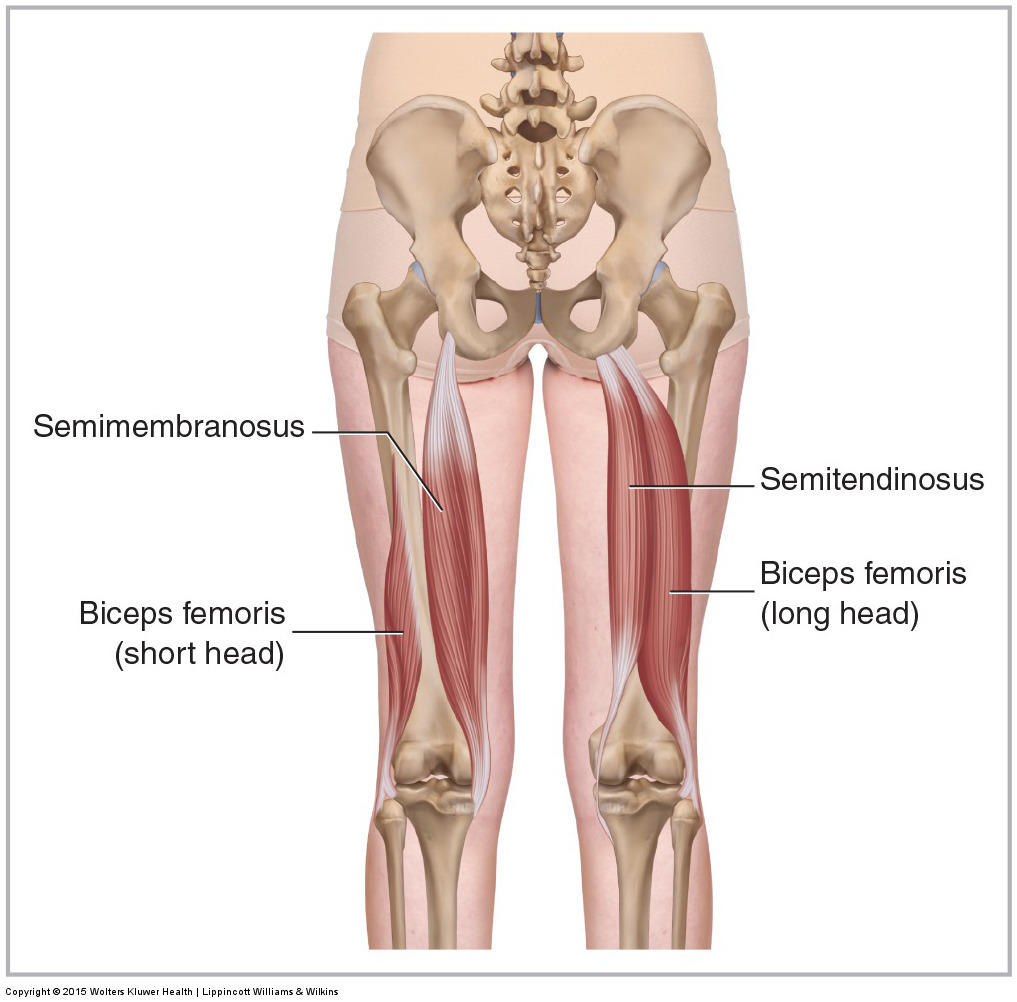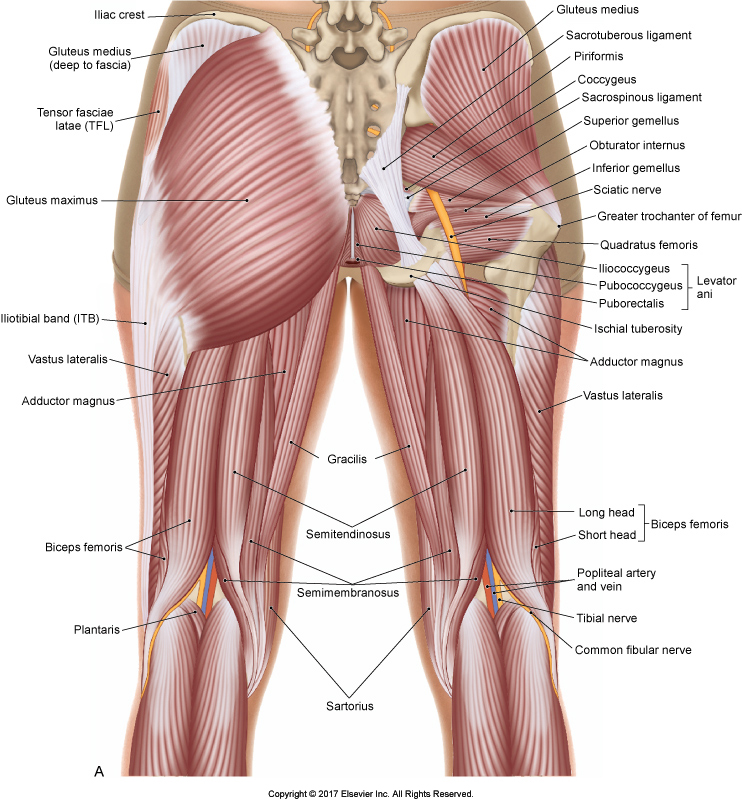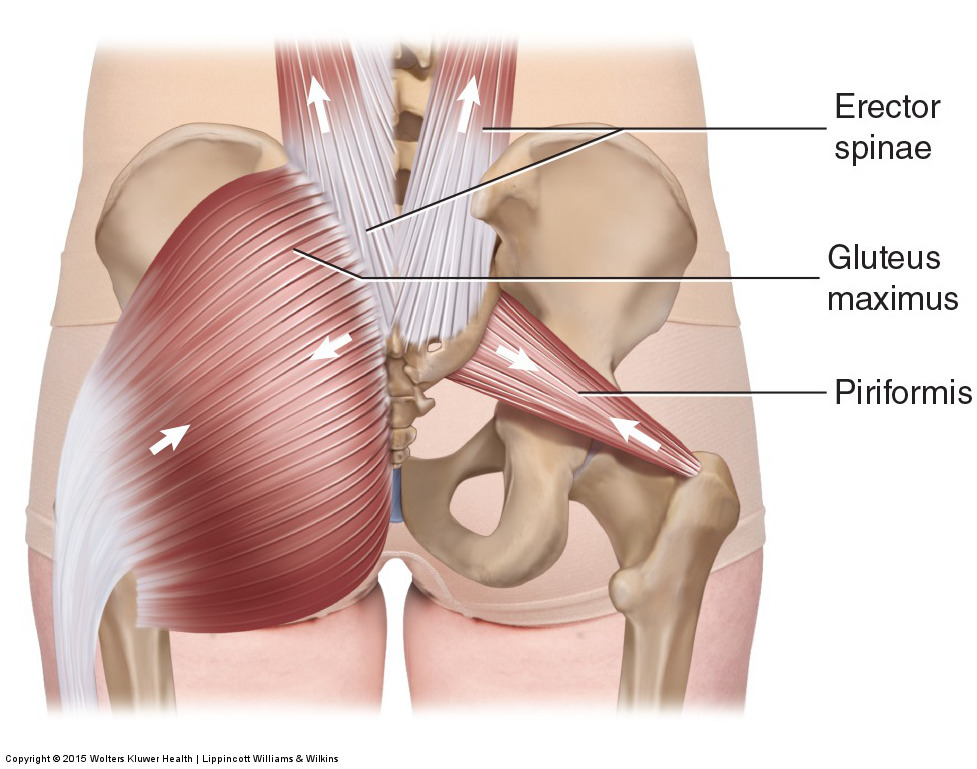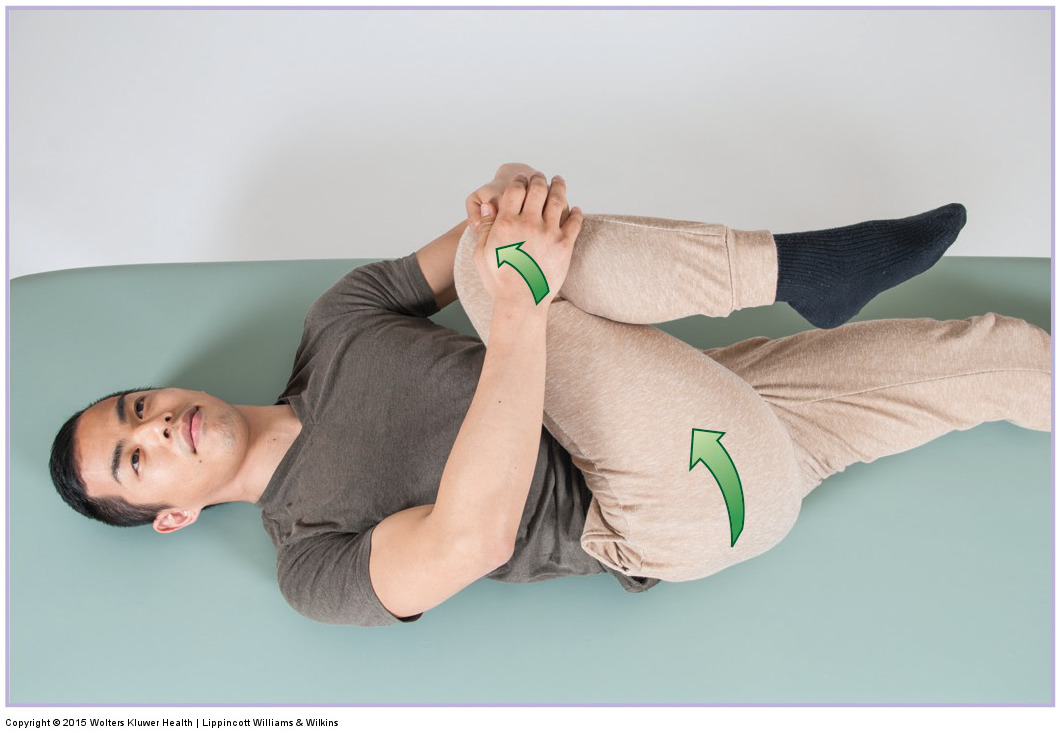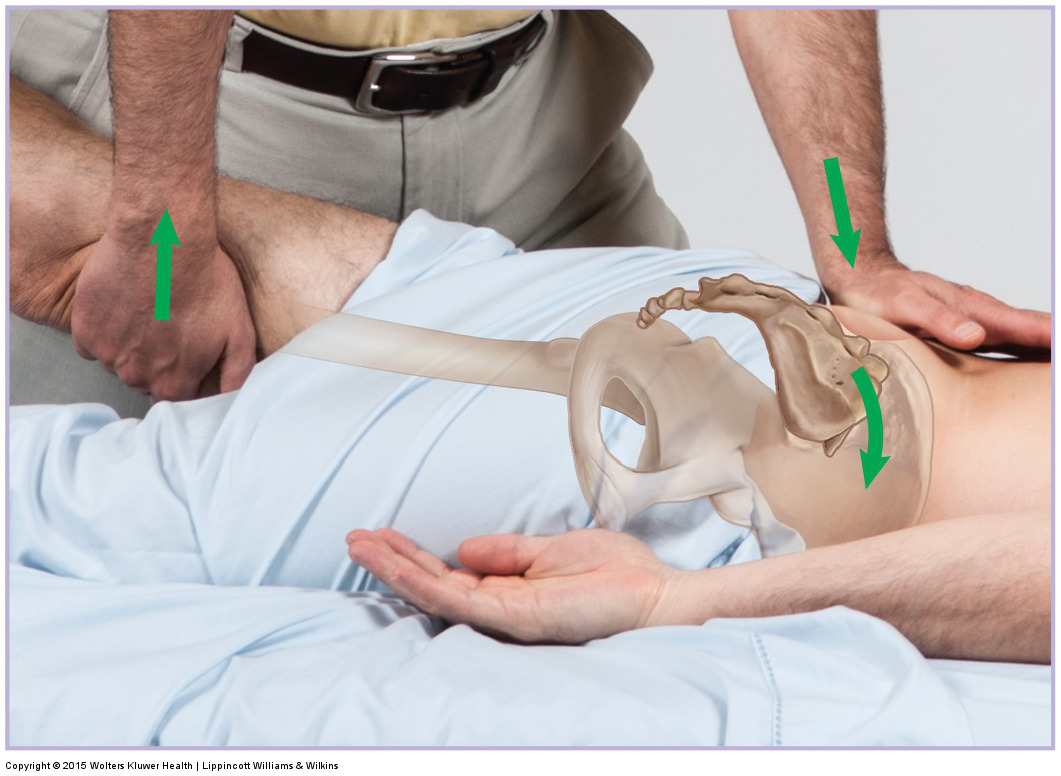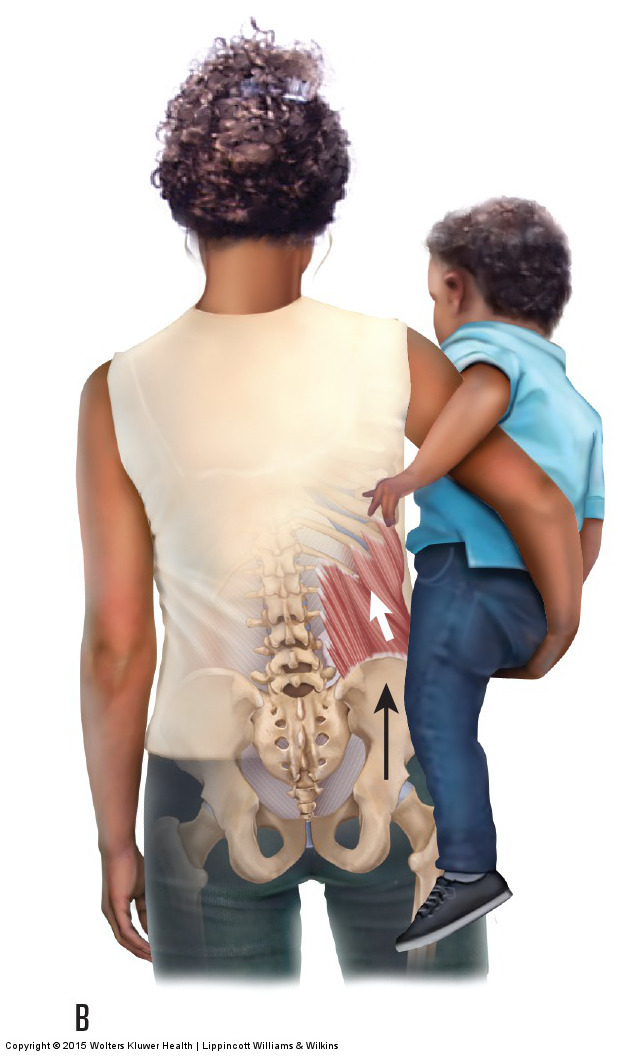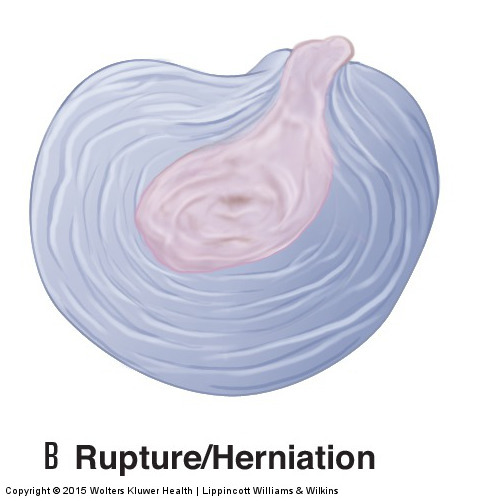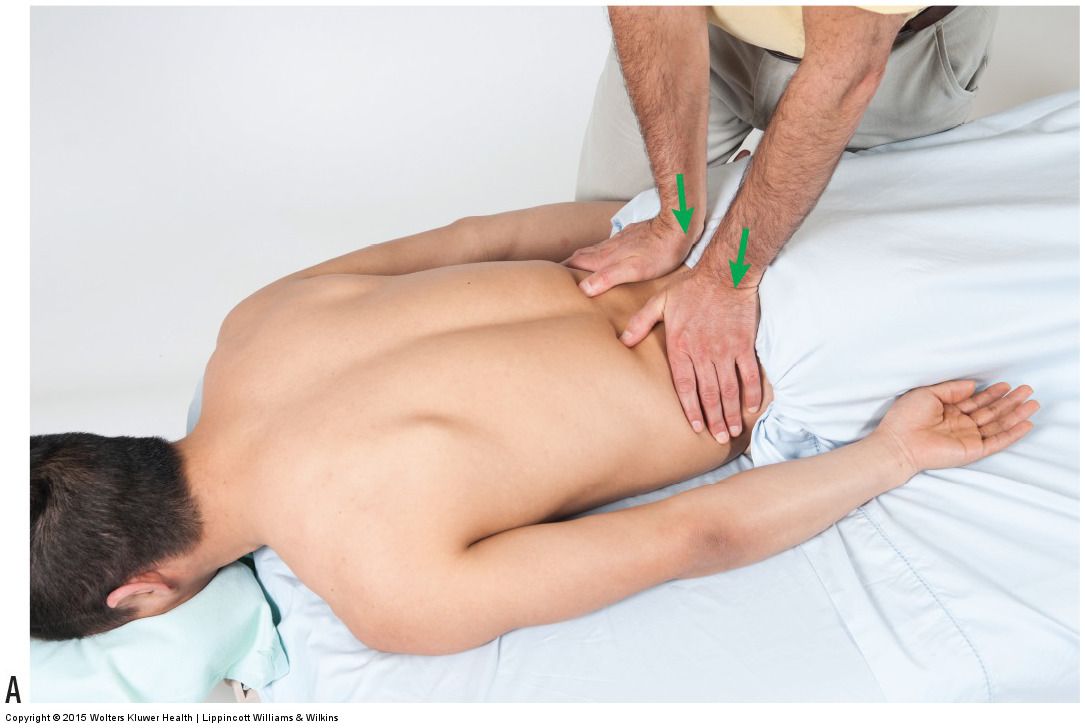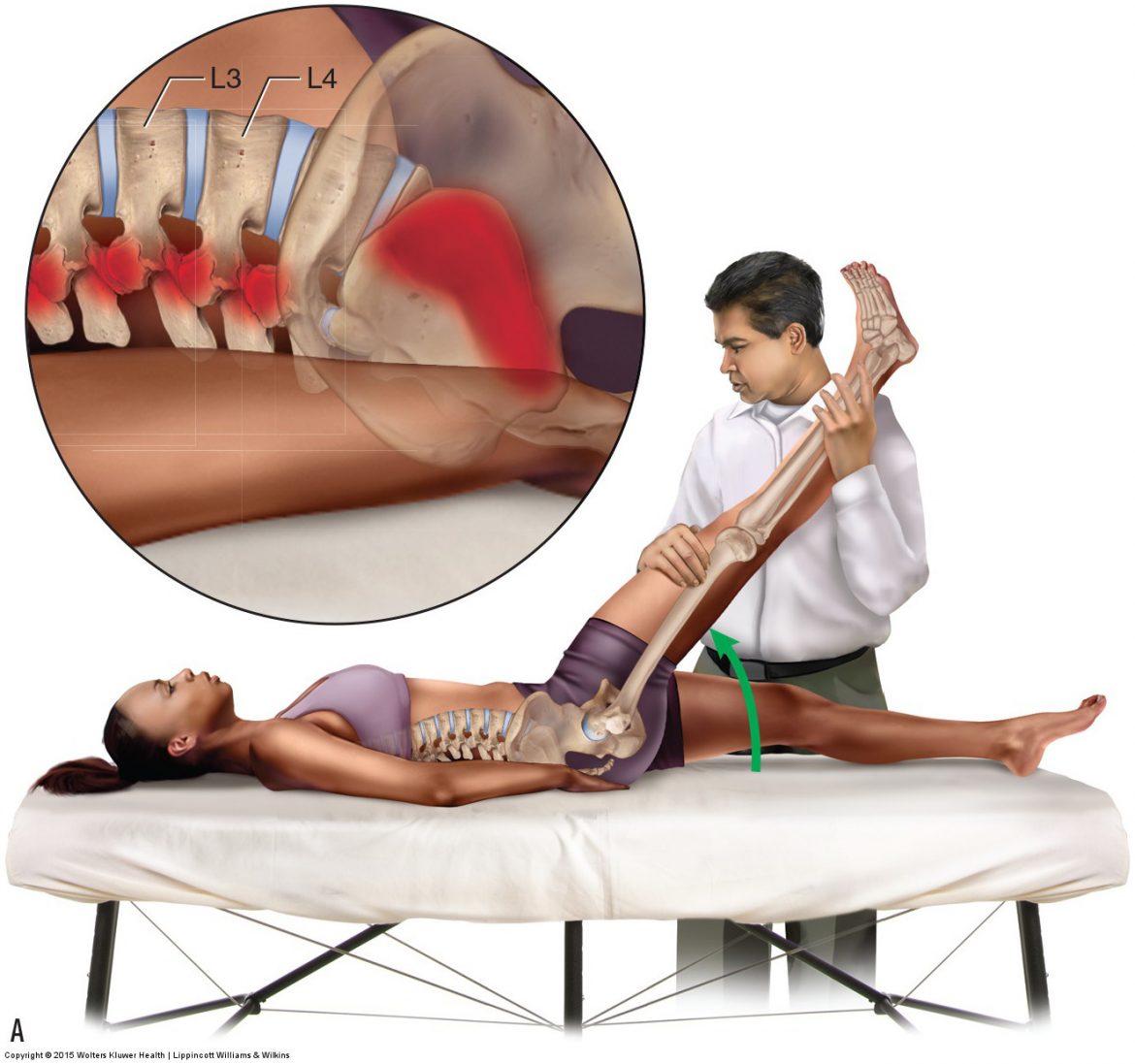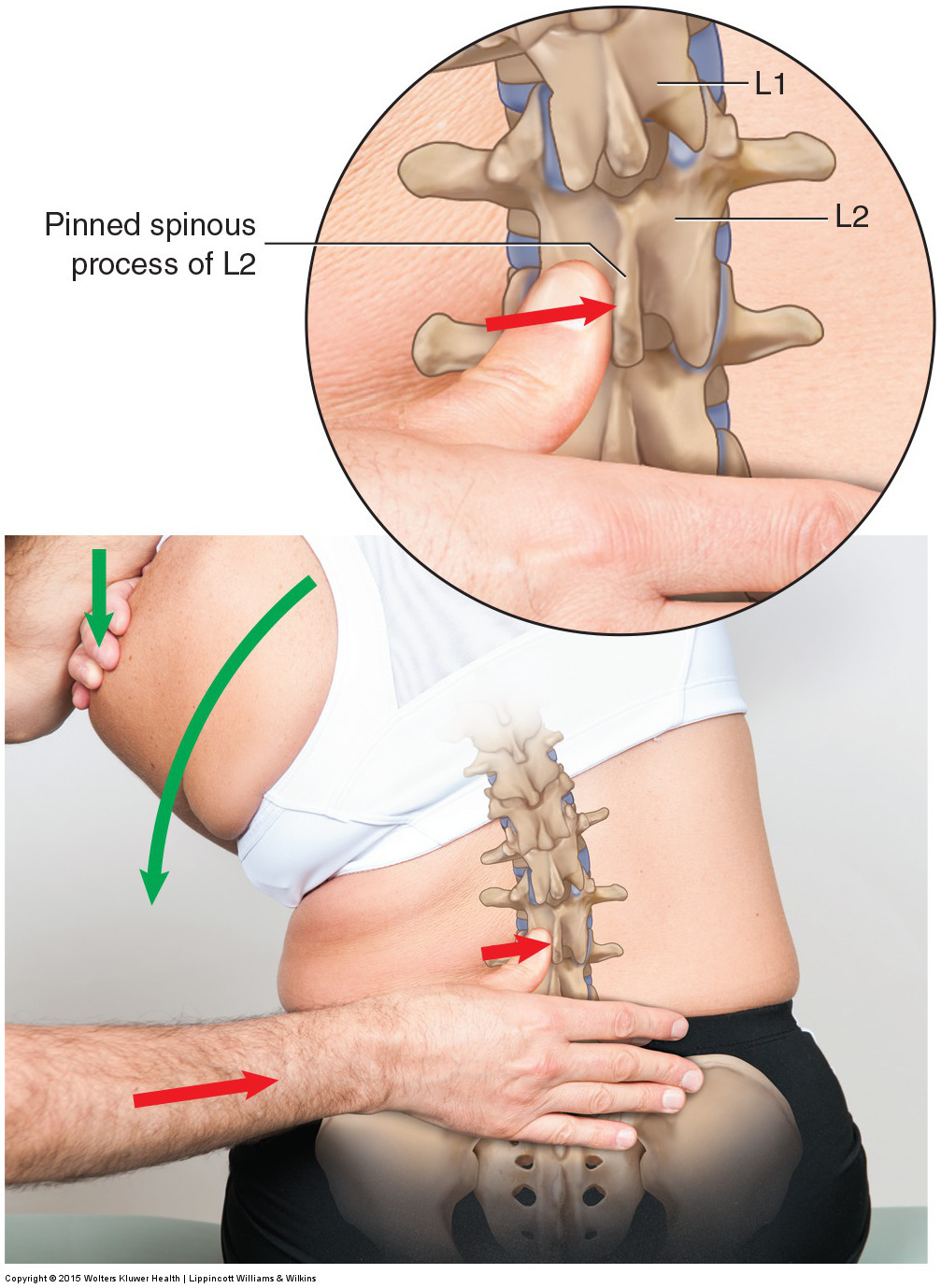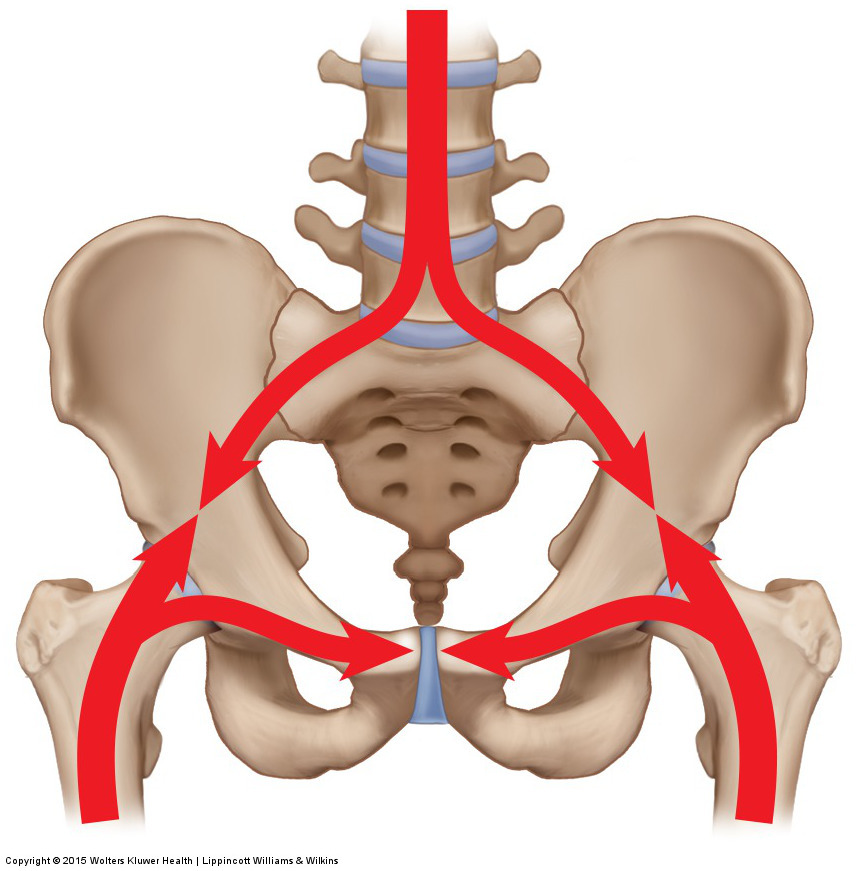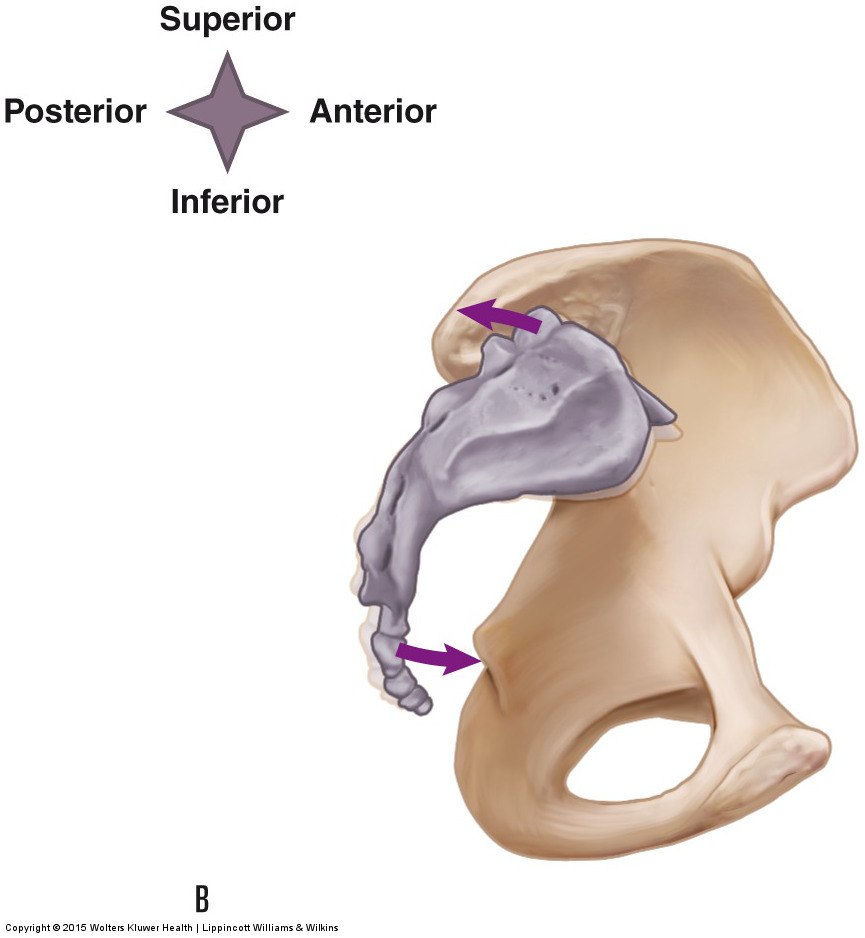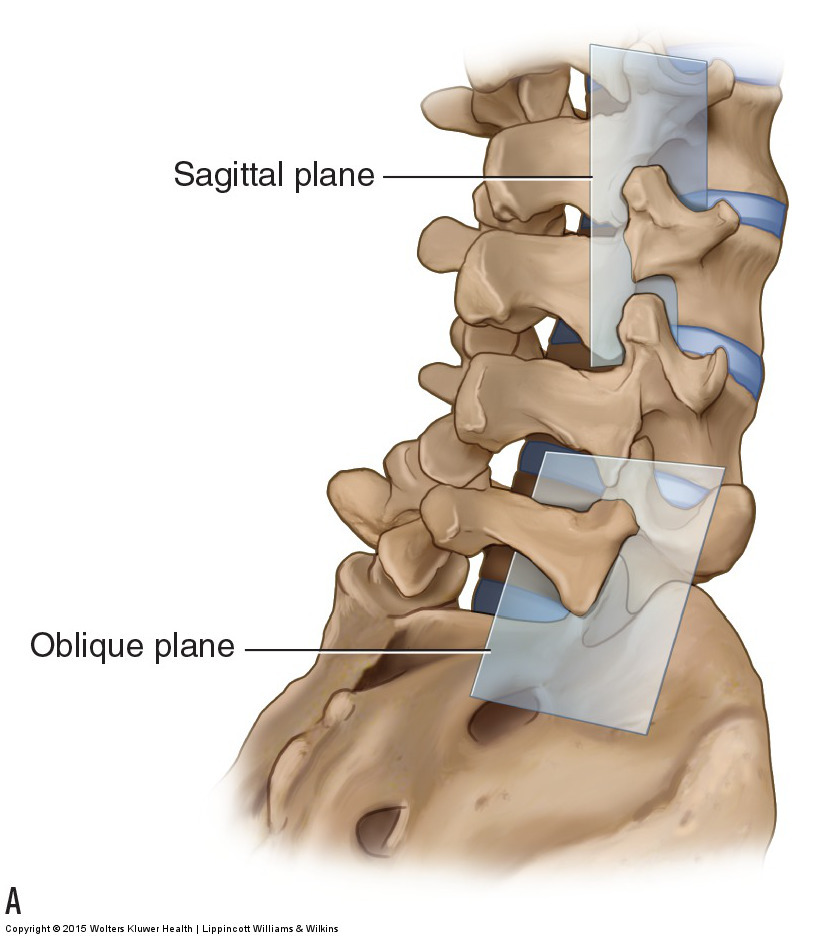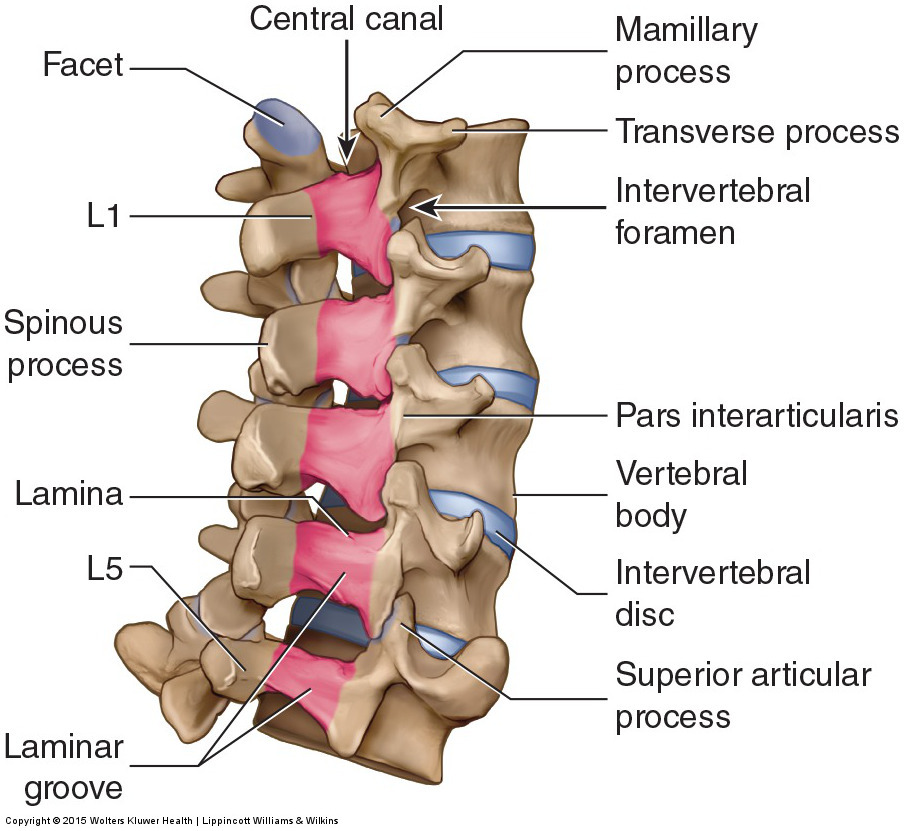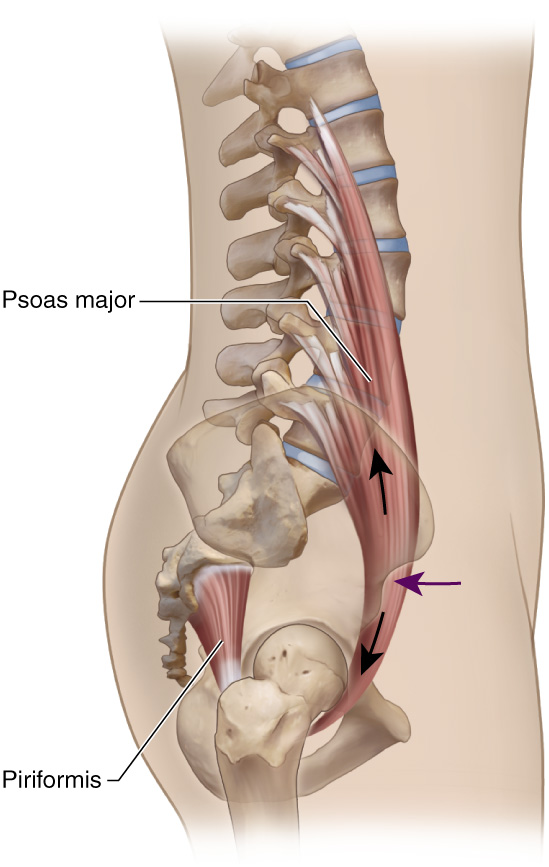These findings of altered movement and glide support the concept that altered mechanics of the sacroiliac joint are correlated with the presence of pain.
Five Muscles of Sacroiliac Stabilization – Part 3 – Hamstrings
The connection between the hamstrings and the sacroiliac joint is through what is known as the superficial back line myofascial meridian/anatomy train. If the hamstrings are tight, their tension pulling force will be exerted through the sacrotuberous ligament and onto the sacrum.
Five Muscles of Sacroiliac Stabilization – Part 2 – Coccygeus and Others
The coccygeus and levator ani are technically muscles of the pelvic floor, however, they are also muscles whose contraction forces cross the sacroiliac joint and therefore often tighten when a sacroiliac joint condition exists. The coccygeus attaches from the sacrum and coccyx to the ischial spine of the pelvic bone.
Five Muscles of Sacroiliac Stabilization – Part 1 – Piriformis
Even when the original reason for the sacroiliac stabilization is valid, often the human body overdoes it and tightens the musculature excessively and/or keeps it tight long after it needs to be, so the musculature becomes stuck in a chronic pattern of hypertonicity.
Self-care and medical approaches to sacroiliac joint dysfunction
Moist heat and stretching is recommended for a hypomobile sacroiliac joint (SIJ) and/or tight musculature that accompanies a hypomobile or hypermobile SIJ.
How do we treat sacroiliac joint dysfunction with manual therapy?
The treatment for a hypomobile sacroiliac joint (SIJ) joint is Grade IV joint mobilization (also known as arthrofascial stretching).
What are the signs and symptoms of sacroiliac joint dysfunction?
Because of the tendency of one sacroiliac joint (SIJ) to compensate for the other when motion is dysfunctional, typically both SIJs become dysfunctional.
What are the causes of sacroiliac joint dysfunction?
The sacroiliac joint is unique in that it is a transitional joint between the sacrum of the spine and the ilium of the pelvic bone of the lower extremity.
Nachlas and Yeoman’s Special Orthopedic AssessmentTests
This blog post article is part of a series of articles on assessment of the low back and pelvis. Scroll to the end of this article to see the others in this series. Nachlas and Yeoman’s Tests Nachlas’ test and …
Brief Review of Assessment and Treatment of Low Back Conditions
The following is a brief overview that links the low back condition with its corresponding assessment procedure and its corresponding treatment.
Sacroiliac Joint Medley of Orthopedic Assessment Tests
The sacroiliac joint (SIJ) medley of tests is a series of five assessment tests to determine if the SIJ is the causative agent of the client’s pain.
Straight Leg Raise and Manual Resistance Tests for Strains and Sprains
Active SLR test assesses both sprains and strains. Passive SLR test assesses only sprains… however, this is a bit of an oversimplification.
Joint Motion Palpation Assessment of the Lumbar Spine and Pelvis
Motion palpation assessment is performed by bringing the client’s joint to the end of its passive ROM and then gently applying a small, even, steady force.
Overview of Orthopedic Assessment Tests for the Low Back and Pelvis
Orthopedic assessment testing works by what could be called “stress and assess”. The test adds a physical stress and we assess the client’s response.
Sacroiliac Joint Injury
The SIJ is subjected to a great deal of physical stresses both from below and above. A sacroiliac joint injury can be inflammation, sprain, and/or strain.
Lumbar Spine Joint Dysfunction
The two most common causes of a hypomobile joint dysfunction are tight muscles, especially smaller, deeper intrinsic muscles, and fibrous adhesions.
Motions of the Joints of the Pelvis (sacroiliac joints)
Motions of the Joints of the Pelvis This blog post article is an overview of the motions of the joints of the pelvis: the paired left and right sacroiliac joints and the symphysis pubis joint. For more complete coverage of …
Joints of the Lumbar Spine (disc & facet) and Pelvis
In the lumbar spine, three joints are located between each two adjacent vertebrae: one disc joint and two paired (left and right) facet joints.
Bones of the Lumbar Spine and Pelvis
The low back is defined by the lumbar spine, composed of 5 vertebrae, named L1-L5. The pelvis is defined by the bones of the pelvic girdle.
Psoas Major Function: Psoas Major and the Sacroiliac Joint
The psoas major crosses the hip and spinal joints. However, it is often overlooked that the psoas major also crosses the sacroiliac joint.

